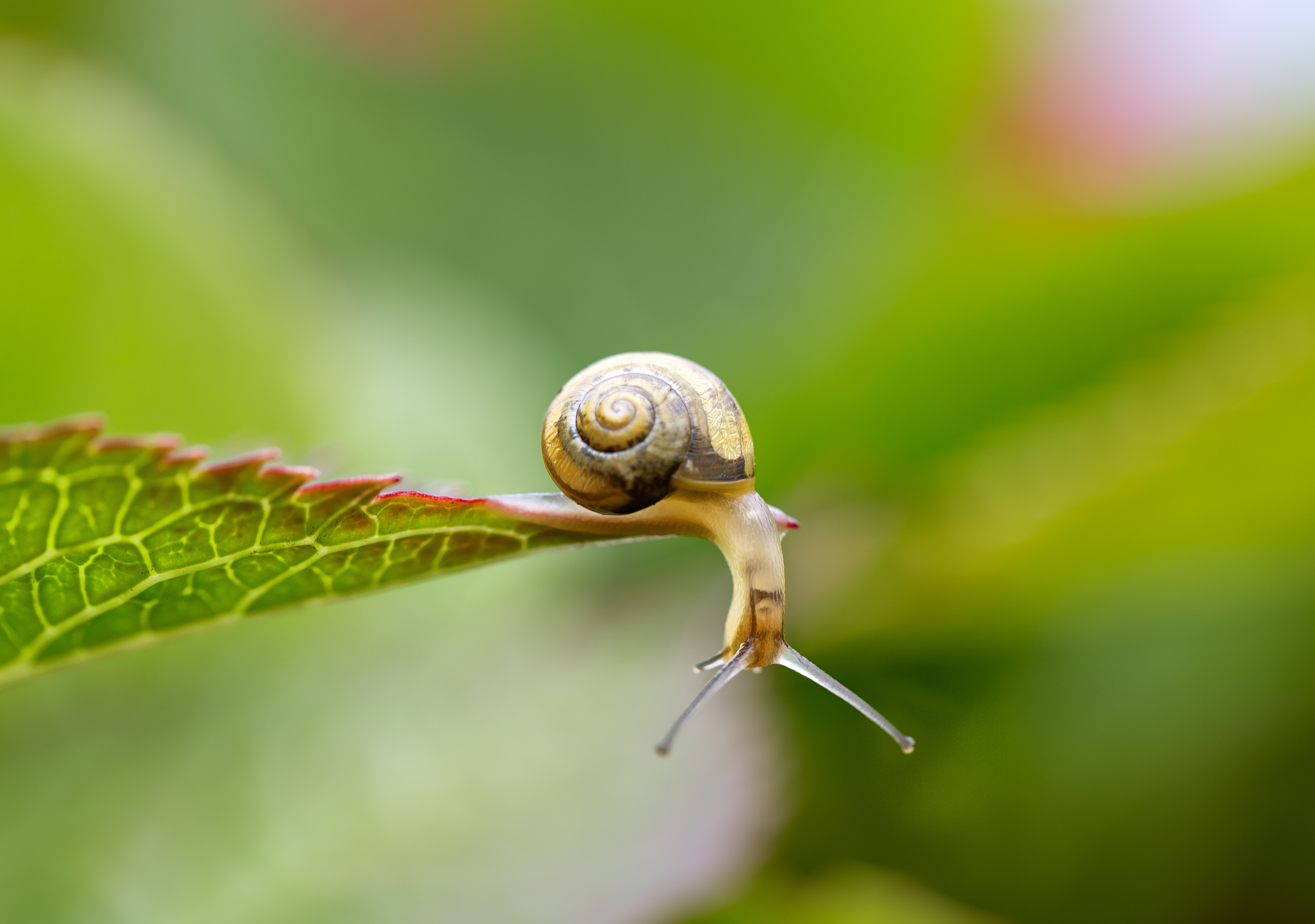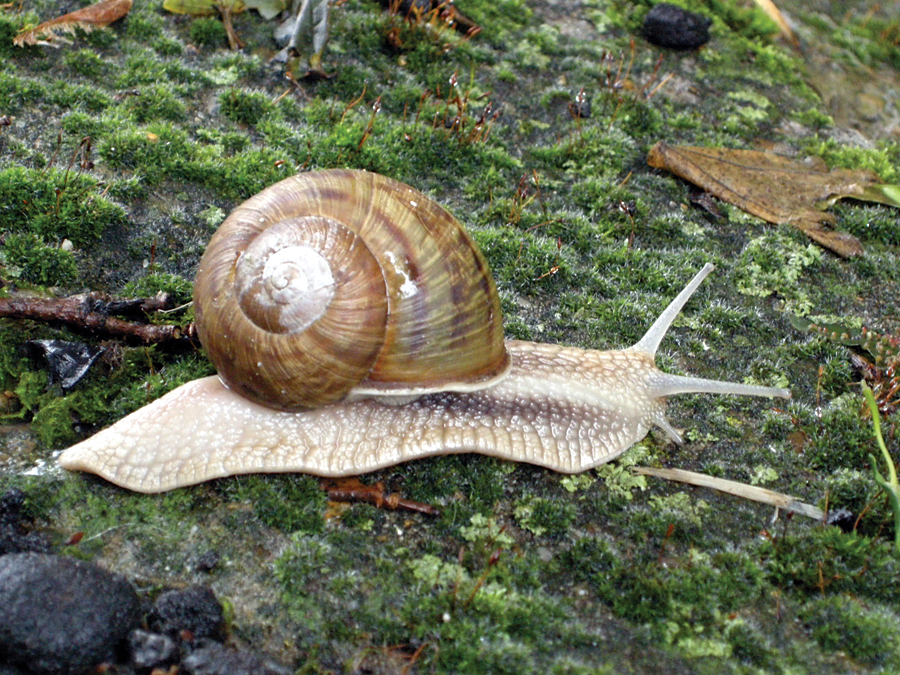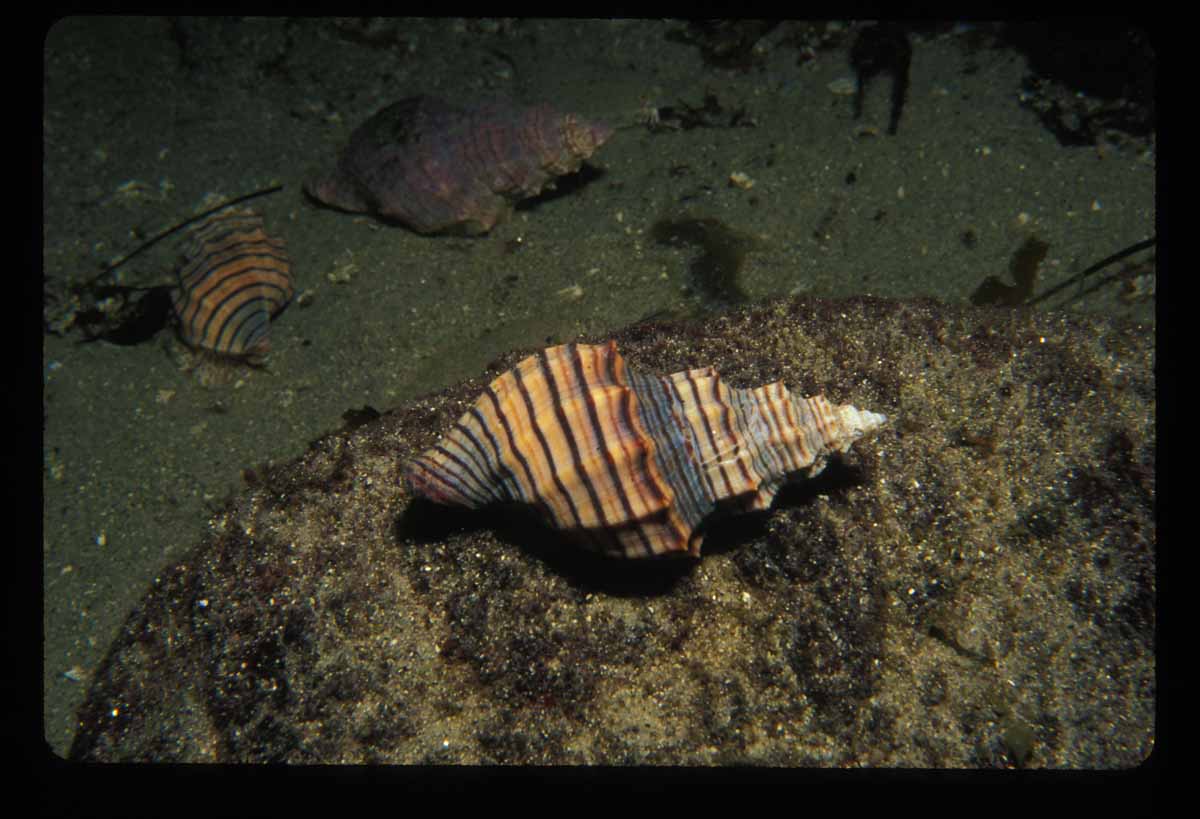Snail is an animal whose soft body is usually covered with a coiled shell. Some snails have a conical or tubular shell. Others, including most slugs, have no shell at all. A snail creeps along on a broad muscular organ called a foot. Its body has a head with tentacles (feelers), eyes, and a mouth. In most species, the mouth includes a ribbon of hard, tiny teeth called a radula. There are more than 40,000 kinds of living snails. Some are smaller than a pinhead. Others measure 2 feet (61 centimeters) long. A snail’s lifespan can range from 1 to over 20 years.

Where snails live.
Snails inhabit many kinds of environments—forests, deserts, rivers, ponds, ditches, and all parts of the ocean. People have traditionally divided snails into three groups, according to where they live: on land, in fresh water, or in salt water.
Land snails usually thrive in damp, shady places—under logs and stones, at the edges of ponds and rivers, and in woods. Most live on the ground, but some large tropical species reside in trees.

Land snails use their muscular foot to crawl about. The muscles of the foot can move in a wavelike motion that propels the snail forward. A moving snail pours out a slime that helps it glide over the surface. In dry weather, many land snails seal themselves in their shells with a “door” of dried slime called an epiphragm. The snails rest in this condition, called estivation, until the dry spell ends. Most land snails possess a primitive lunglike organ that enables them to take in oxygen from the air.

Freshwater snails live in rivers, ponds, lakes, and hot springs. Some of them have a lunglike organ and must come to the surface to breathe air. Others possess gills, enabling them to take oxygen from the water.

Saltwater or marine snails rank as the largest snail group. They inhabit marshes, mudflats, and coral reefs, and they can even live on the ocean floor. Some remain permanently attached to shells or rocks, while many others burrow beneath the sediment surface. A few kinds can swim by flapping modified winglike body parts. Marine snails typically breathe with gills. Many of these snails have a shelly lid, called an operculum, which seals the animal in whenever it draws itself into its shell.
Habits.
Snails feed on plants, algae, organic debris, and living and dead animals. Some snails drill holes in shelled prey, such as oysters and clams, and insert a long feeding tube, or proboscis, to obtain the soft tissues. A few small ocean snails are parasites, and may feed on starfish or corals. Snails themselves provide food for birds, fish, crayfish, and even other snails.
Many land snails and shell-less marine snails have both male and female sex organs in the same animal. Most other types are either male or female. A few kinds change sexes during their lifetime, usually from male to female. Land snails typically lay eggs in moist areas under rocks or buried in sediment. Some of these eggs have a hard protective cover. Certain freshwater snails give birth to small but fully developed juveniles. Marine snails may deposit eggs that hatch out as underdeveloped larvae called veligers. Some types of egg-laying snails tend to their eggs before they hatch.
Snails and people.
Many people consider the Helix garden snail, known as escargot, a great delicacy. Chowder made with conch, a large marine snail, remains a popular dish. Snail shell collecting ranks as a popular hobby, and many collectors prize the colorful shells of various saltwater snails. The turban snail of Australia is commonly used to create jewelry. Snails have also proved valuable in medical research. Much of what we know about the human nervous system comes from studies of a snail called the sea hare.
Some snails, however, prove harmful to people. Certain tropical freshwater types carry parasitic worms that cause schistosomiasis, a disease that kills thousands of people each year. Edible sea snails can transmit other diseases, such as hepatitis, if they are taken from polluted water. A small number of cone snails from the Indian and Pacific oceans carry a venom that can kill people. In addition, human beings have spread some kinds of snails to regions where the animals have become pests. For example, the giant African snail, once found only in Africa, now threatens farmers in North America because it destroys many kinds of plants.
